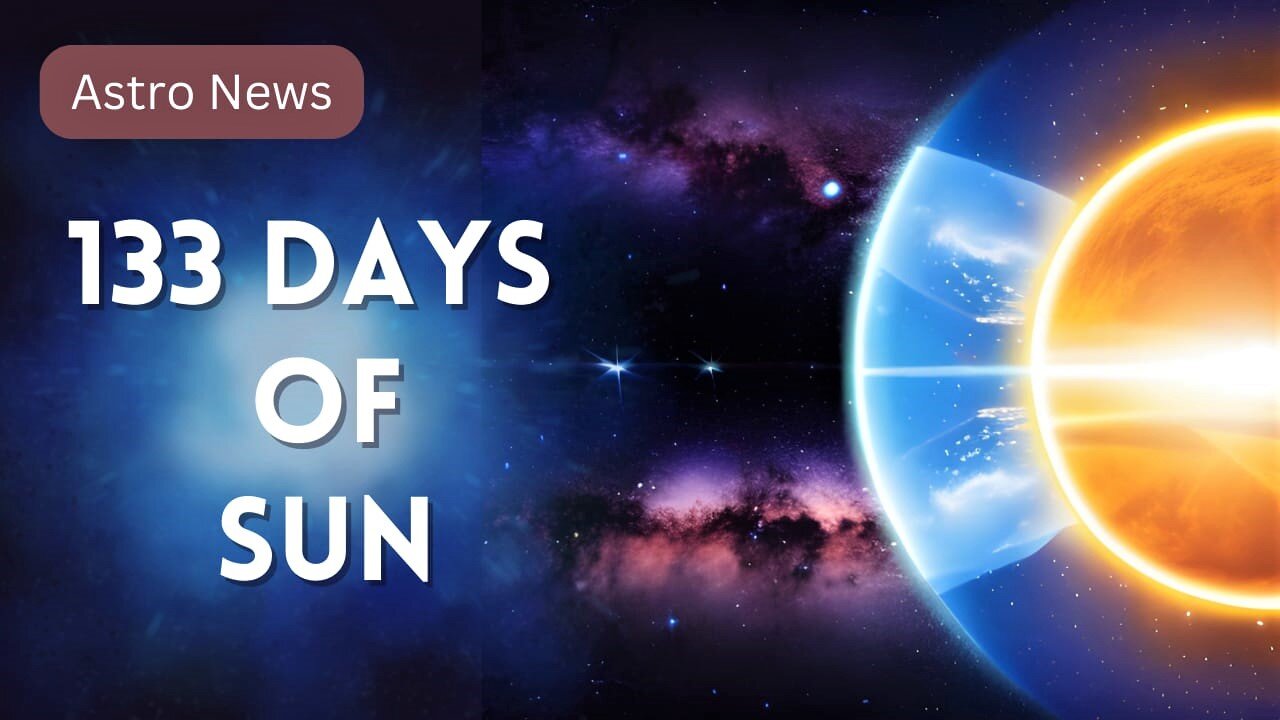Premium Only Content

133 Days of Sun From Space
The Sun appears quite different when viewed from space compared to how it appears from Earth's surface. Here are some key characteristics of how the Sun looks when observed from space:
A Constantly Shining Star: The Sun is a giant ball of hot, glowing gas, primarily hydrogen and helium. From space, it appears as a brilliant, radiant sphere of intense light. It emits a constant stream of energy through nuclear fusion reactions in its core, which is why it shines so brightly.
No Atmosphere: Unlike Earth, the Sun has no atmosphere. When viewed from space, there is no distortion or scattering of its light by Earth's atmosphere, which can create the familiar blue sky and sunset colors we see from the surface. Instead, it appears as a pure, white or yellow-white sphere.
Solar Corona: During a total solar eclipse, the Sun's outer atmosphere, called the corona, becomes visible. This can also be observed from space when the Moon passes in front of the Sun. The corona is a faint, wispy halo of plasma extending far from the Sun's surface, composed of ionized gas. It is visible as a delicate, glowing halo with streamers and loops extending outward.
Solar Flares and Prominences: From space-based observatories like the Solar and Heliospheric Observatory (SOHO) or the Solar Dynamics Observatory (SDO), scientists can capture detailed images of the Sun's surface. These images reveal features such as solar flares (brief eruptions of intense radiation and particles) and solar prominences (huge, looping arcs of plasma extending from the Sun's surface).
Constantly Changing Surface: The Sun's surface, known as the photosphere, is not static. It is marked by dark spots called sunspots, bright regions called faculae, and granules caused by the churning motion of hot gas. These features can be observed and tracked from space, providing valuable information about the Sun's activity.
Different Views at Different Wavelengths: Space-based observatories allow scientists to observe the Sun in various wavelengths of light, including ultraviolet and X-rays. These observations reveal different layers and aspects of the Sun's behavior, such as its magnetic field and the temperature variations in its atmosphere.
In summary, when viewed from space, the Sun appears as a brilliant, constant source of light without the influence of Earth's atmosphere. It showcases a dynamic and ever-changing surface, and specialized instruments can reveal intricate details about its structure and activity
-
 LIVE
LIVE
LFA TV
8 hours agoDems Fight Harder for Illegals Than for Citizens | TRUMPET DAILY 4.22.25 7PM
196 watching -
 LIVE
LIVE
RalliedLIVE
4 hours ago $0.92 earnedWarzone Wins All Night w/ Ral
180 watching -
 LIVE
LIVE
Geeks + Gamers
1 hour agoTuesday Night's Main Event
415 watching -
 57:03
57:03
BEK TV
20 hours agoTHE GREAT TAKING: HOW GLOBAL ELITES PLAN TO STRIP YOU OF YOUR PROPERTY SAVINGS
3.17K2 -
 LIVE
LIVE
SilverFox
18 hours ago🔴LIVE - OBLIVION REMASTERED REVEALED! FIRST IMPRESSIONS!
147 watching -
 2:17:01
2:17:01
The Quartering
6 hours agoWoke MELTDOWN As Trump Demands Repayment Of Student Loans, Austin Metcalf Dad Oblivion Greed,
155K74 -
 1:17:43
1:17:43
Awaken With JP
5 hours agoDid JD Vance Kill the Pope? - LIES Ep 88
73.6K56 -

LFA TV
21 hours agoALL DAY LIVE STREAM - 4/22/25
88.4K27 -
 1:39:24
1:39:24
The HotSeat
3 hours agoNo Consequences for Chaos: Tesla Gets Torched While Trump Makes Freeloaders Pay Up
37K7 -
 45:55
45:55
Coin Stories with Natalie Brunell
7 hours agoT.J. Miller on Hollywood's Bitcoin Blind Spot, Celebrity vs Wealth and Why There's No Second Best
28.6K1